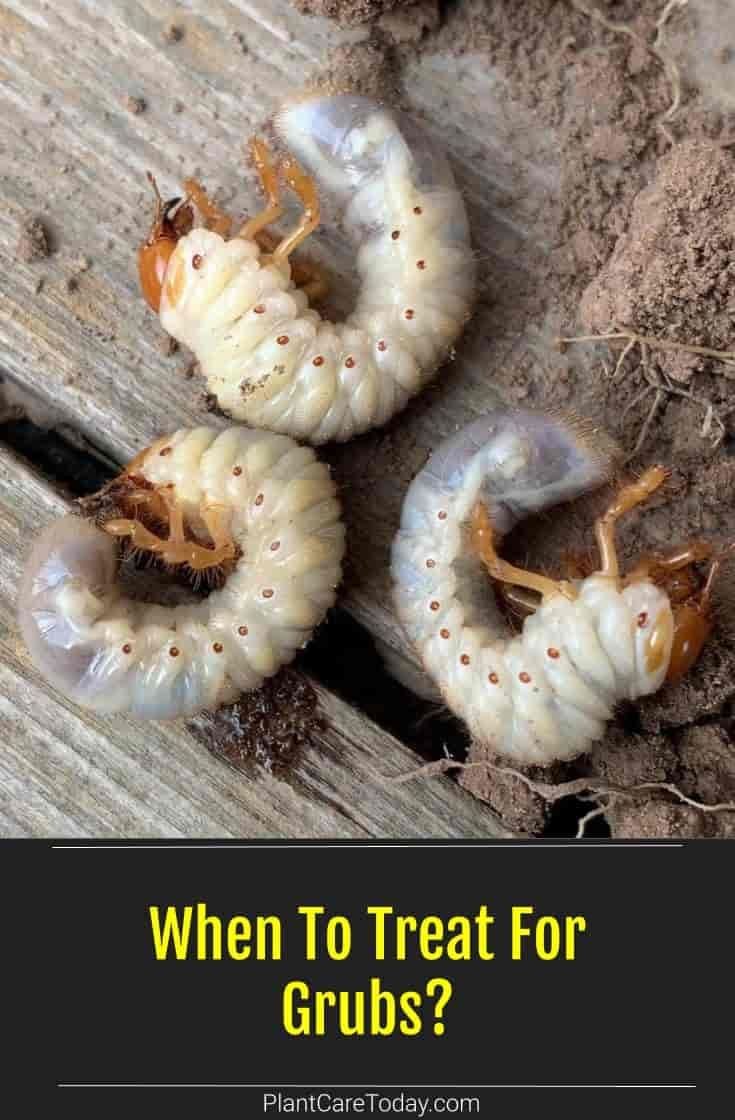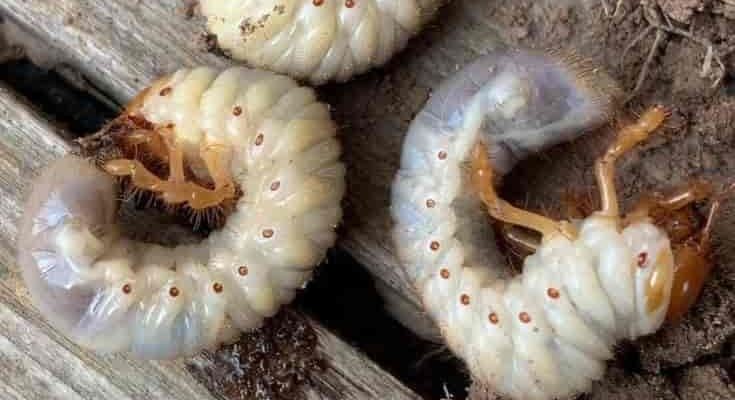
Understanding Grub Worm Life Cycle
To know when to treat for grubs, you first need to understand their life cycle. Grub worms typically go through several stages: egg, larva (the grub stage), pupa, and adult beetle. Their lifecycle starts in late spring, when adult beetles lay eggs in the soil. These eggs hatch into grubs during the summer, often around June or July, and that’s when they begin to feast on your grass roots.
This larval stage is particularly dangerous for your lawn. Grubs feed on the roots of grass, causing significant damage that can lead to dead patches. By late summer, they’re growing larger and causing even more destruction. Therefore, knowing when these stages happen is key to treating your lawn effectively.
Best Time to Apply Preventative Treatments
Applying preventative treatments is all about timing. The best time to treat for grub worms is typically in late spring—around late May to early June—just as the grubs are hatching and starting to feed. This is when you want to put down a preventive insecticide, which can disrupt their development.
Products designed for grub control often work best in this window, as they target the young larvae before they have a chance to do major damage. Think of it like putting on sunscreen before heading out to the beach; you want to protect your lawn from the sun’s harmful rays, and similarly, you want to shield your grass from these pests before they can cause problems.
Timing for Curative Treatments
If you’ve noticed damage in your lawn already, you’ll need to take a different approach. Curative treatments are most effective in late summer, specifically from late July through early September, when grubs are at their largest and most vulnerable. By this time, they’ve feasted on your grass roots, making it important to hit them hard with a curative treatment.
Many products available for grub control during this time are designed to kill larger grubs, which is essential for recovery. You want to ensure that your lawn has a fighting chance to bounce back before winter hits. Keep in mind that timing is everything, and applying treatment too late in fall won’t be as effective, as grubs will burrow deeper into the soil as temperatures cool down.
Weather Considerations
Weather plays a significant role in the life cycle of grubs, and it’s something to keep in mind when planning your treatments. Warmer-than-average temperatures can lead to earlier egg-laying and hatching, meaning you might need to adjust your timing accordingly. Similarly, if you’re in a cooler climate, your treatment window might be shorter.
Monitoring the weather and soil temperatures can help you stay on track. A soil temperature of around 60°F is ideal for grub treatment, as it encourages their activity and makes them more susceptible to your control measures. Keep an eye on local weather forecasts, as this can impact when you should plan your treatments.
Identifying Grub Worm Damage
Before jumping into treatment, it’s crucial to confirm that grubs are indeed the culprits behind your lawn’s discoloration. If you see brown patches, check for signs of grubs. You can do this by lifting a patch of grass and looking for the grubs underneath. They’re usually C-shaped and can be white or off-white in color.
Here’s a quick checklist for identifying grub worm damage:
- Look for brown patches that don’t bounce back when you step on them.
- Check for grubs by digging about a few inches into the soil in those patches.
- Inspect for birds or other critters pecking at your lawn, as they might be after the grubs.
If you find grubs, that’s your cue to act! Just remember, the sooner you treat them, the better chance your lawn has to recover.
Choosing the Right Products
When it comes to treating grub worms, choosing the right product is just as important as timing. There are two main types of products: preventative and curative. Preventative treatments are typically granular or liquid insecticides that you apply before grubs become an issue. Curative treatments, on the other hand, are designed for targeted action against larger grubs.
Always read the instructions carefully and make sure the product is safe for your lawn type. You might also want to consider whether you prefer a chemical treatment or a more natural solution. Some eco-friendly options can effectively manage grub populations without harsh chemicals, so weigh your options based on your lawn care philosophy.
Maintaining Healthy Lawn Practices
Preventing grub worm infestations starts long before you notice any damage. Keeping your lawn healthy is crucial in making it less attractive to these pests. Regular mowing, proper watering, and fertilizing at the right times can help boost your grass’s resilience against grubs.
Healthy grass roots are less susceptible to damage. Consider these practices:
- Mow regularly at the correct height for your grass type.
- Water deeply but infrequently to promote strong root systems.
- Fertilize in the spring and fall to keep your lawn lush and strong.
By creating a healthy environment, you’re making your lawn less appealing to grubs and other pests, reducing the need for treatments down the line.
Final Thoughts on Grub Worm Treatments
Dealing with grub worms can feel overwhelming, but with the right knowledge and timing, you can protect your lawn effectively. Understanding their life cycle and knowing the best times to apply treatments are essential first steps.
Always monitor your lawn for signs of damage and act promptly. Combining smart treatments with good lawn care can keep those pesky grubs at bay. Just remember—taking these steps now means you can enjoy a lush, green lawn later. Happy gardening!

